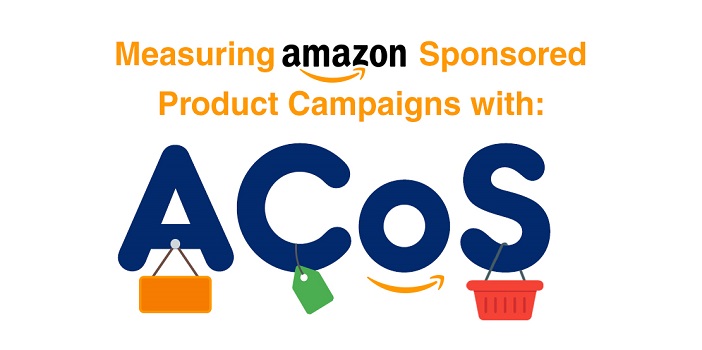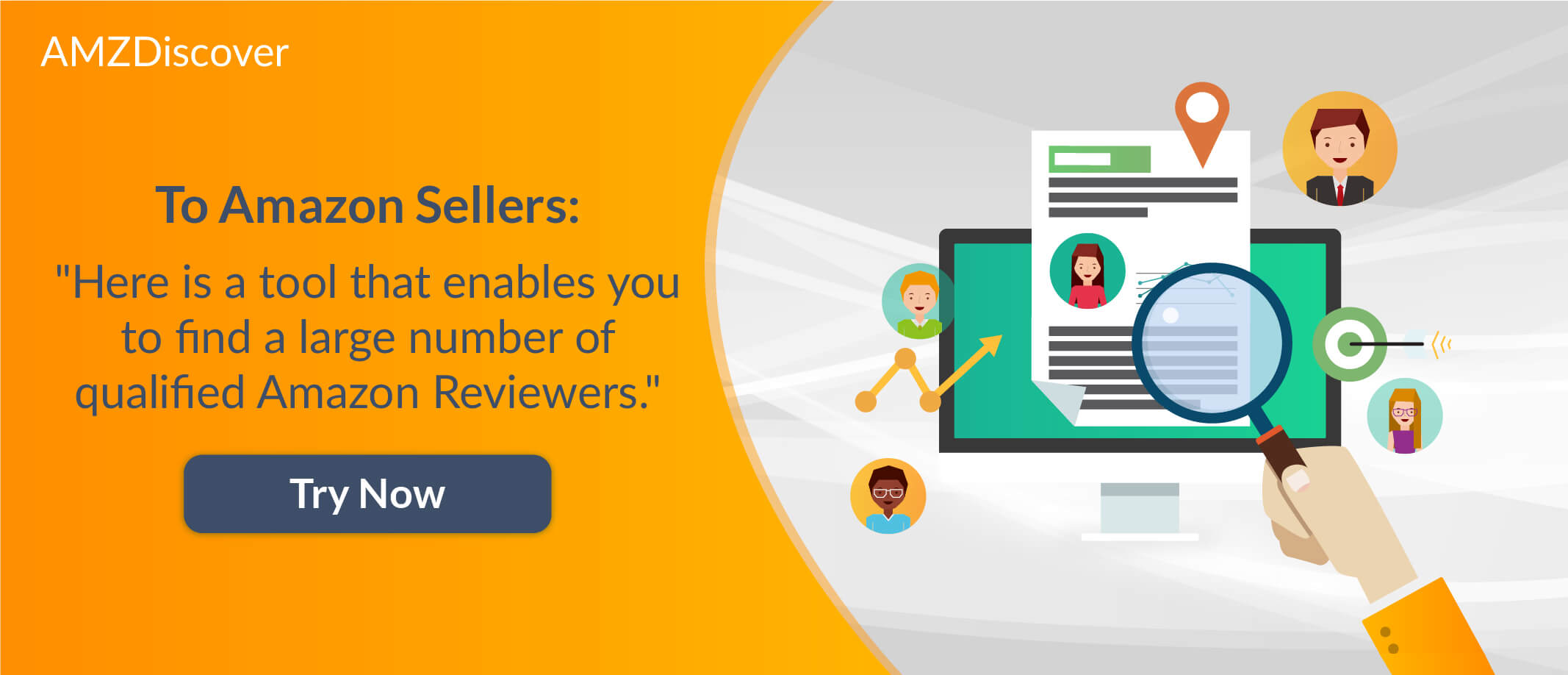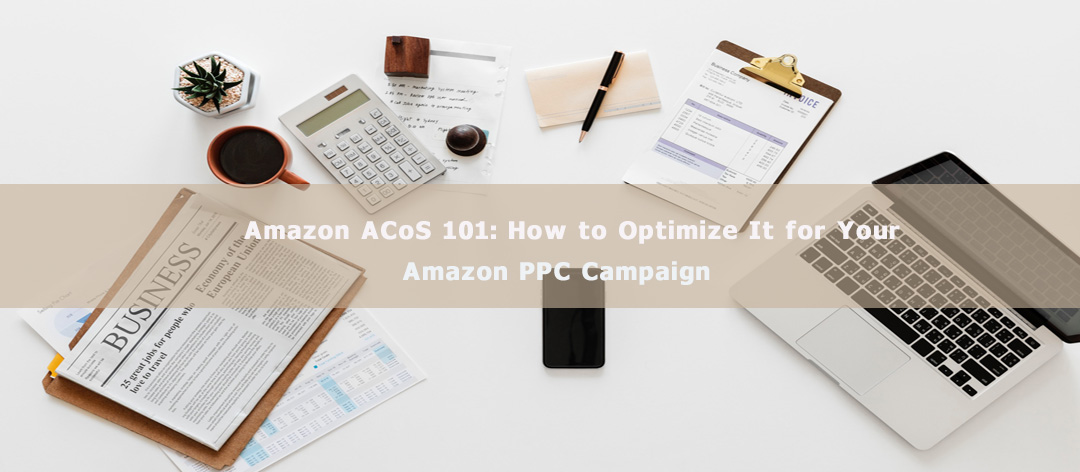As an Amazon seller, there’s no question that advertising works however, in the digital world, the different methods of advertising – and how to take advantage of them – can be baffling.
One of the most effective methods of digital advertising is Pay Per Click (PPC) whereby a predetermined amount is paid by the seller every time their ad is clicked on by an internet user.
Although PPC is a great tool for Amazon sellers, many are not using it to its full advantage. The following is a guide to mastering ACoS (Advertising Cost of Sales) in order to get the best performance from your PPC campaign.
What Is ACoS and How Is It Calculated?
ACoS is Amazon’s unique metric which is used to work out the success of an advert.
It can be referred to as cost per conversion which translates to how many sales you made from your advert.
The following will give you an idea of how this works in practice:
- Selling Price (this is the price you are selling the product for on Amazon)
- Cost Price (this is the price that you pay to your supplier for one product)
- All FBA Fees (this is the price that you pay for your warehousing/distribution by Amazon, per unit)
- Miscellaneous expenses (this is your other outgoings such as packing, shipping, etc)
For example:
Your Selling Price: $27
The cost per unit: $4
Your FBA Fees: $11
Miscellaneous: $3
First, we take the selling price of $27 which is what you have made by selling one item. We then calculate our costs which amount to $18.
Now, we subtract our costs from the selling price – $27 – $18 = $9. This figure shows us that we can spend up to $9 to achieve a sale without losing money.
To work out our ACoS, we divide the net income by the sales price which gives us an ACoS of 33%.
Pros and Cons of Both High ACoS and Low ACoS

Amazon figures for 2018 show that the average ACoS is 30.4%. This, of course, means that many ads performed above this level and, that many performed below it.
In general, there’s no such thing as bad ACoS – both high ACoS and low ACoS have their benefits and downsides and, here, we examine both:
Low ACoS
A low ACoS campaign is one which has performed below average in terms of advertising spend vs sales achieved.
Although this may sound like a bad thing, it can actually be good news for your campaign.
Many sellers make a point of aiming for a low ACoS in order to increase profitability or to boost a low-converting product.
An example of this would be if you spent $20 on your PPC campaign and made attributed sales of $200, giving you an ACoS of 10%.
Although the ACoS is low, you’ve made a profit of $180 which is, of course, a good thing!
The downside to a low ACoS is that low advertising spend tends to equate to low visibility of your product.
PPC works by setting bids on keywords and, like with any kind of auction, if you bid too low, you lose – particularly when using very popular keywords.
High ACoS
There’s an old saying which states that “You have to speculate to accumulate”, meaning that you have to spend money to make money.
Setting a high ACoS for your product will virtually guarantee visibility and will help you to highlight your product as a market leader thereby increasing profits in the long term.
Although more expensive, a high ACoS is particularly useful for increasing brand awareness or for a short-term campaign to sell an end of the line product.
In the digital world, this is the equivalent of paying for an expensive billboard or bus stop ad rather than a classified ad in the local newspaper and will often net results fast.
The downside of high ACoS is that you will spend more on your advertising campaign and, as with any kind of selling; there are never any guarantees in terms of how many products will be sold from that campaign so you run the risk of losing money.

How to Target Your ACoS
Here comes the tricky part! You now know the pros and cons of high and low ACoS but, which one is right for your campaign?
To figure out which ACoS is right for you, you need to take into account the profit margin and overall cost structure of your product.
A simple rule here would be to calculate your profit margin (the percentage of the money you make on a product after your costs are deducted) and then subtract the ACoS percentage – this will give you your final margin.
Common sense tells you that, as long as your profit margin is higher than your advertising costs, then you’re making money – which is, of course, the point of being an Amazon seller.
When it comes to this equation, you’re looking to achieve high sales and low ACoS.
It’s important to remember that every product is different which means that every campaign is different and may require a different strategy.
Although breaking even may seem like a good strategy in order to boost organic rankings, this does, of course, minimize your profit.
Best Time to Use High ACoS
As an Amazon seller, there are a number of circumstances whereby aiming for a high ACoS is the best option.
These include:
- The launch of a new product whereby you’re looking to gain high visibility in a short amount of time
- The fast sale of slow-moving inventory (this can be particularly useful if your 6 month Amazon storage time is nearly up and you want to avoid storage fees)
- You wish to raise awareness of your brand in order to increase your ranking
- You are launching a new product in a hugely competitive genre
On the other hand, opting for a low ACoS can be useful if:
- You’re selling a low-cost product
- You’re experimenting with PPC and don’t want to spend too much
- You’re running a long-term “slow burn” campaign rather than looking for fast results
How to Optimize Your Target ACos?
Whether you’ve opted for a low ACoS or a high one, there are a few things you can do to help your campaign to perform at the top of its potential.
Adverts
Make sure that your advert is engaging and attention-grabbing – remember, in the digital world, attention spans are short so you need to be able to grab an internet user’s attention enough to get those fingers clicking onto your ad.
Run an A/B testing campaign to see what works for your product and then adjust your ads accordingly.
Give yourself a boost
Take steps to increase your seller ranking including gaining positive reviews – see our guide to get reviews HERE.
Tagging
By combining your ACoS with Amazon PPC, you will have access ($40 for professional seller accounts) to Automatic Tagging whereby Amazon will select your ads and keywords based on its own expert research.
As with so much of online selling, using ACoS to your advantage is all about the keywords and, there are a number of online tools available to help you choose the right keywords for your product such as the hugely popular AMZ keyword finder tool.
One tip for using keywords in your PPC campaign is to choose three and use a combination of them in your ads.
Over time, your Amazon reports will show you which are working and which are not.
Although calculating which ACoS is right for your product may be daunting at first, you’ll soon get the hang of it – and, before long, you’ll wonder how you managed without it!
You may also like:
- Amazon SEO: How To Rank Your Products To Top One on Amazon
- Top 6 Amazon Landing Page Generators For FBA Sellers To Drive External Traffic
- A Complete Guide To Advertise Amazon Products on Facebook
- Complete Guide: How to Advertise on Amazon to Maximize Your Sales
- Best 10 Amazon Pricing Strategies That Sellers Should Know
